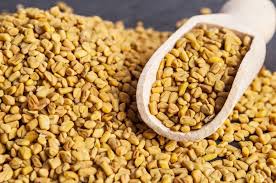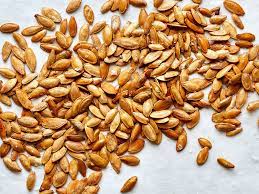Cinnamon seeds typically refer to the seeds found in the fruit of the cinnamon tree (Cinnamomum verum or Cinnamomum cassia), which is a popular spice tree known for its aromatic bark. However, it’s important to note that when we commonly refer to cinnamon, we usually mean the bark, not the seeds. Cinnamon seeds are small, brown to dark brown in color, and generally resemble tiny grains or seeds.
The seeds are found within the fruit of the cinnamon tree. After the flowering process, the tree produces small berries that contain the seeds. While cinnamon bark is the more commonly used part of the cinnamon tree, the seeds can also be used. They are sometimes ground into a powder and used as a spice or flavoring agent in various dishes. However, it’s important to note that the most well-known and widely used part of the cinnamon tree is the bark.
Cinnamon seeds, like the bark, have a warm, sweet, and slightly spicy flavor. The aroma is fragrant and reminiscent of the typical cinnamon scent. In traditional medicine, cinnamon seeds have been used for their potential health benefits, although research on their specific medicinal properties is not as extensive as that for cinnamon bark.
While not as common as using cinnamon bark, the seeds can be used in a variety of culinary applications, including baking, spice blends, teas, or infusions. Cinnamon seeds can also be used to extract essential oil, which is often used in aromatherapy, as a flavoring in food and beverages, and in various cosmetic and medicinal products.
It is worth noting that the primary and most widely used part of the cinnamon tree is the bark, which is harvested and processed into the familiar cinnamon spice used in cooking and baking. The seeds are less commonly used and are not as well-known as the bark.
The Economic Importance and Uses of Cinnamon Seeds

Cinnamon seeds are not typically a widely recognized or utilized part of the cinnamon plant in terms of economic importance or widespread use. In fact, when people refer to cinnamon, they are usually referring to the bark of the cinnamon tree (Cinnamomum verum or Cinnamomum cassia) rather than the seeds. The bark is the primary part of the cinnamon plant that is used for various economic purposes and has a range of uses, including culinary, medicinal, and industrial applications.
Here are the economic importance and uses of cinnamon, focusing on the bark rather than the seeds:
1. Culinary Uses: Cinnamon is a widely used spice in cooking and baking due to its distinct and warm flavor. It’s used in a variety of dishes, including desserts, curries, stews, and beverages like hot chocolate and mulled wine. Cinnamon enhances the taste and aroma of food, making it a staple in many cuisines around the world.
2. Medicinal Uses: Cinnamon has been used for centuries in traditional medicine due to its potential health benefits. It’s believed to have anti-inflammatory, antifungal, antibacterial, and antioxidant properties. It may help in managing blood sugar levels, improving digestion, and boosting overall immune health. Cinnamon is used in various forms, such as ground powder, essential oil, or as a supplement.
3. Beverage Industry: Cinnamon is a popular flavoring agent in the beverage industry. It’s used in teas, coffees, and even alcoholic drinks to impart a unique and spicy flavor. Cinnamon-based beverages are particularly popular during colder seasons.
4. Aromatherapy and Perfumes: Cinnamon essential oil, derived from the bark, is used in aromatherapy and perfume production. Its warm and comforting scent makes it a valuable addition to perfumes, candles, and diffusers.
5. Pharmaceuticals and Toiletries: Cinnamon is an ingredient in pharmaceuticals, toothpaste, mouthwashes, and other oral care products due to its potential antibacterial properties. It’s also used in soaps, lotions, and other personal care products for its pleasant aroma.
6. Food Industry: Cinnamon is used in the food industry for flavoring various products like candies, chewing gum, syrups, and breakfast cereals. It enhances the taste and appeal of these products.
Read Also: Cinnamon Bark: Economic Importance, Uses, and By-Products
7. Preservation and Food Safety: The antimicrobial properties of cinnamon are utilized for food preservation and safety. Cinnamon oil and extracts can be used as natural preservatives to extend the shelf life of certain food products.
The Products and By-products That Can Be Derived From Cinnamon Seeds
Cinnamon is primarily known for its bark, which is used as a popular spice. However, cinnamon seeds are not typically a significant source of products or by-products compared to the bark. Nevertheless, I can provide information about potential uses and by-products that could be derived from cinnamon seeds, though these may not be as common or commercially prevalent as those from the bark.
1. Cinnamon Seed Oil: Cinnamon seed oil can be extracted from the seeds through a steam distillation process. This oil can have applications in the fragrance industry, as a flavoring agent, and potentially in traditional medicine due to its aromatic and potential therapeutic properties.
2. Cinnamon Seed Flour: Cinnamon seeds can be ground into a fine powder to create cinnamon seed flour. This flour could be used as an ingredient in baking or cooking, providing a unique flavor and aroma to various dishes.
3. Animal Feed Additive: Cinnamon seed powder or meal could be utilized as an additive in animal feed. It may provide some nutritional benefits and potential digestive health benefits for animals.
4. Cinnamon Seed Extracts: Extracts can be made from cinnamon seeds, which may contain certain compounds with potential antioxidant, antimicrobial, or other health-promoting properties. These extracts can be used in dietary supplements or herbal remedies.
5. Cinnamon Seed Infusions or Teas: Cinnamon seeds can be used to make infusions or teas, similar to how cinnamon bark is used. The infusion may have a milder flavor compared to cinnamon bark-based infusions.
6. Cinnamon Seed Infused Oils: Cinnamon seeds can be infused in carrier oils like olive oil or coconut oil. This infusion process can extract the aromatic compounds from the seeds and infuse them into the oil, creating a flavored oil that can be used for cooking or in various culinary applications.
7. Cinnamon Seed Syrup or Concentrate: The seeds can be processed to extract a concentrated syrup or liquid extract. This concentrate can be used to sweeten beverages, baked goods, or desserts, adding a hint of cinnamon flavor.
8. Cinnamon Seed Tinctures: Cinnamon seed tinctures can be made by soaking the seeds in alcohol or another solvent to extract the active compounds. These tinctures can be used in herbal medicine or as flavoring agents.
9. Biofuel or Energy Source: While less common, cinnamon seeds can potentially be used in the production of biofuels. The seeds might contain oils that can be converted into biodiesel, contributing to sustainable energy production.
10. Cinnamon Seed Powder as Spice Substitute: Cinnamon seed powder can be used as a substitute for traditional cinnamon bark powder in recipes. While the flavor and aroma may differ slightly, it can still provide a similar essence to dishes.
In conclusion, it is important to remember that the utilization of cinnamon seeds for these products and by-products may require further research, testing, and development to ensure their safety, efficacy, and market acceptance. Additionally, local customs, regulations, and availability of resources can also influence the utilization and commercialization of these potential products and by-products.
Read Also: What Are the Benefits of Crayfish?

